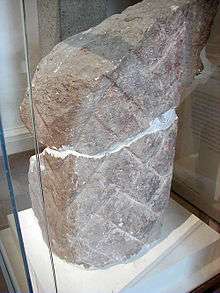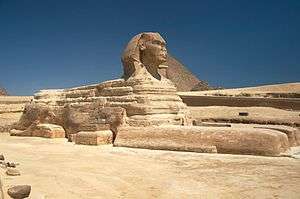Giovanni Battista Caviglia
Giovanni Battista Caviglia (1770 in Genoa – September 7, 1845 in Paris) was an explorer, navigator and Italian Egyptologist. He was one of the pioneers of Egyptian archeology of his time. He was influential in the excavation of the Sphinx of Giza near Cairo.
He was born in Genoa in 1770 at a time when the city was the capital of the Republic of Genoa. He spent most of his life sailing in the Mediterranean in which he became a merchant captain.[1][2]
When he decided to start his career as an explorer left his ship moored in Alexandria, and offered his services to various collectors, and most of his excavations were carried out on behalf of the Consul General British Henry Salt.
Between the 1816 and 1817 explored the pyramid of Cheops where he made important discoveries, including the descending corridor, the bottom of the well service and unfinished underground room.


In 1817 Salt hired him to dig up the sphinx Cairo, which over the centuries had been almost totally covered by the sands of the desert.
The last dig around the sphinx had been performed in the year 160 AD by order of the Roman Emperor Marcus Aurelius. As the excavations continued with Caviglia, he came upon an array of Egyptian artifacts and inscriptions in Greek and Latin.
In 1819, he had to suspend his research.
Following the exploration during the excavations carried out in 1820 on behalf of the British in the ancient capital Memphis, which is located about 20 km south of Cairo, he made a 'sensational other discovery: the Colossus of Ramses II. This was a 'huge statue limestone who found near the south gate of the Temple of Ptah, near the village of Mit Rahina. Despite being free of foot measuring over 10 meters. The offered through the Egyptologist Ippolito Rosellini, the Grand Duke Leopold II of Tuscany who refused to difficulties and any transportation costs. Following this, the pasha of Egypt 'Mehmet Ali gave it to British Museum in London, which in turn declined the' offer for the same reasons. It was then built on the place a museum where you can still find it.[3]
In 1835, when he was already 65 years, Egyptologists British Richard William Howard Vyse and John Shae Perring hired him as an assistant for their excavations at Giza. The research was carried out using large quantities of dynamite and took place in the pyramids of Khufu and Menkaure. The collaboration lasted a couple of years' after which Vyse, contrary to the methods Ankle, fired him.[1]
He spent the last years of his life in Paris, where he died on 7th September 1845.
See also
Notes
- 1 2 "Early Travelers and Explorers to the Pyramids, Part II". Egypt Tour. 2010.
- ↑ "IL GRANDE BELZONI DI MARCO ZATTERIN". CoaloaLAB.
- ↑ "Colossus of Ramesses II". Egypt Tour. 2010.
|
